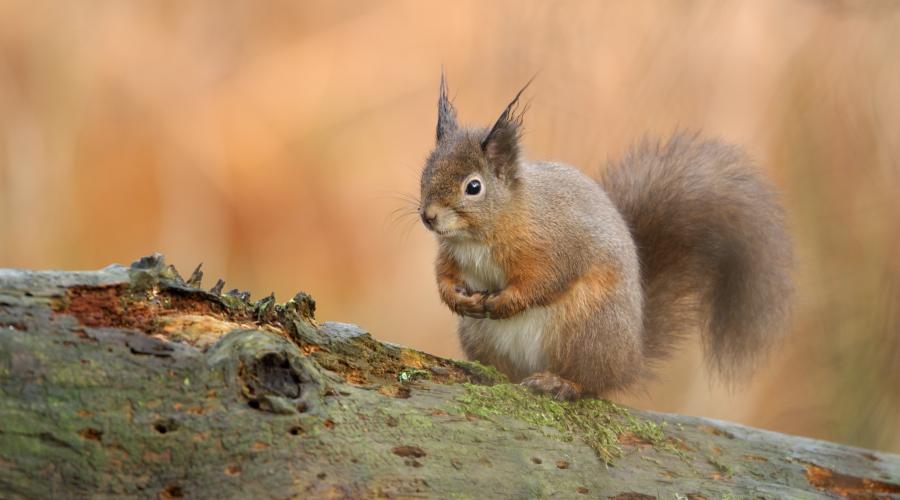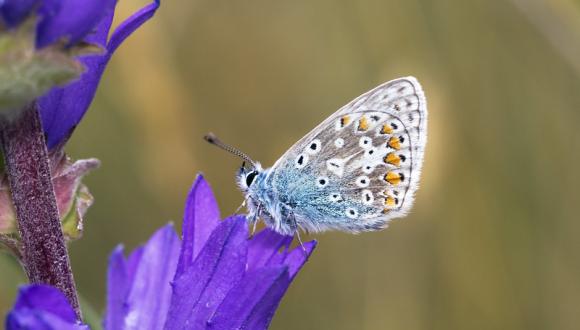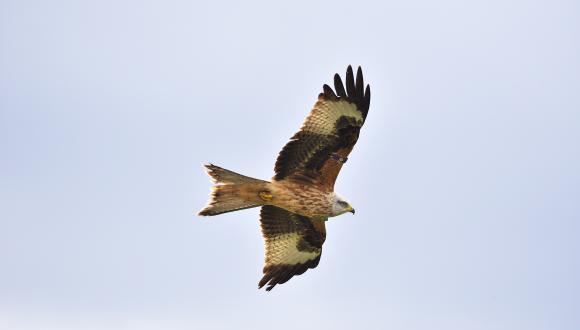
Scotland in world first for genetic diversity
01 February 2020
Scientists have developed a world-first method to help understand and conserve genetic diversity in some of our most iconic wild species.
Heather, red squirrel, golden eagle, Scottish bluebell and Scots pine are among those assessed in a new report published by NatureScot.
Genetic diversity is the differences among individuals due to variation in their DNA.
Conserving the genetic diversity of plants, animals and wild species is the focus of one of the 20 international Aichi biodiversity targets.
But while there are strategies in place to assess and report on genetic diversity in agriculture, horticulture and forestry, there is a gap when it comes to wild species.
Researchers identified a list of target species of particular importance for Scotland and developed a “genetic scorecard” for each, assessing their genetic diversity and any associated risks.
The species were chosen for their conservation or cultural value, importance for food and medicines or because they provide crucial ecosystem services such as carbon storage.
The research found that four of the assessed species - wildcat, ash, great yellow bumblebee and freshwater pearl mussel - were classed as being at risk of severe genetic problems as a result of factors including non-native species, disease, habitat loss and pollution.
Conservation action is underway to address these threats, for example through the Saving Wildcats project and Biodiversity Challenge Fund cash recently announced to enhance key freshwater pearl mussel populations across Scotland.
The new method for assessing genetic diversity will help further target long-term conservation strategies and address the international target.
The report follows the news earlier this year that NatureScot’s Beinn Eighe National Nature Reserve has been formally recognised as the UK’s first area designated for genetic conservation, reflecting the importance of its ancient Caledonian pine forest.
Environment Secretary Roseanna Cunningham said: “Our natural environment is central to our national identity, thanks in no small part to the many unique, varied and iconic wild species that are native to Scotland.
“A pivotal part of conserving some of our most at-risk biodiversity is to build a full picture of the pressures and issues that our wild species are facing – including the state of their genetic diversity. Work around conserving genetic diversity is an area where Scotland is genuinely ground-breaking. In Beinn Eighe, we were the first nation in the UK to have a site recognised for genetic conservation.
“That is why this report, which provides us with new and powerful insight into the state of the genetic diversity amongst wild species is so important, and I look forward to it playing an important role driving further progress to safeguard Scotland’s biodiversity.”
David O'Brien, NatureScot Biodiversity Evidence and Reporting Manager, said: “Often when we talk about biodiversity the focus is on species and ecosystems, but genetic diversity is also essential for nature to be resilient in the face of pressures such as climate change, and it’s great that Scotland is leading the way in this field.
“For the first time, this report sets out a clear ‘scorecard’ method for assessing the genetic diversity of wild species and applies this to some of our most important plants, animals and birds.
“Not only does it fill a major gap in addressing the international target for genetic biodiversity conservation but importantly it can be expanded to cover many more species, and adapted for use in any country in the world.”
Professor Pete Hollingsworth, Director of Science at the Royal Botanic Garden Edinburgh, said: “Genetic diversity is the raw material that allows species to evolve and adapt to a changing environment – and thus conserving genetic diversity is an important way of helping nature to help itself.”
“Genetic diversity is key to species adapting to changing climates, to new diseases or other pressures they may face. At a time of increasing pressures and threats – maintaining genetic diversity maximises options and opportunities for species to persist and survive”.
Dr Rob Ogden, Head of Conservation Genetics at the University of Edinburgh and co-author of the scorecard report, said: “The scorecard is designed as an affordable, practical tool that allows every country to assess its wildlife genetic diversity; what we measure in Scotland can now be compared around the world.”
The report has been endorsed by the International Union for Conservation of Nature (IUCN) and submitted to Convention on Biological Diversity ahead of the Kunming summit, which will see 196 countries meet in China to adopt a new global framework to safeguard nature and its contributions to human wellbeing. The meeting aims to set the course for biodiversity conservation for the next 10 years and the decades to come.
Find out more
You can also read the following reports -
- Scotland’s Biodiversity Progress to 2020 Aichi Targets: Conserving Genetic Diversity – Development of a national approach for addressing Aichi Biodiversity Target 13 that includes wild species
- Scotland’s Biodiversity Progress to 2020 Aichi Targets – Aichi Target 13 – Genetic Diversity Maintained – Supplementary Report 2020






